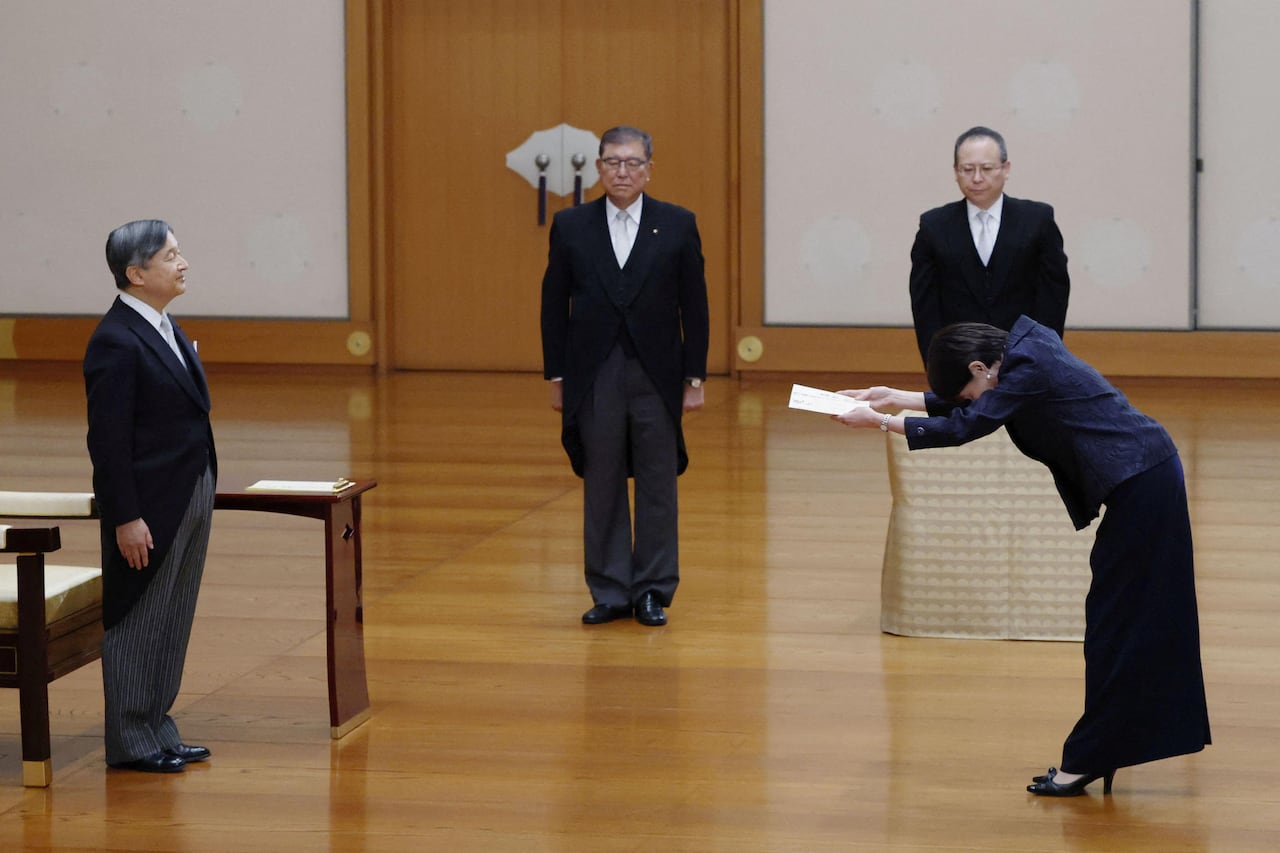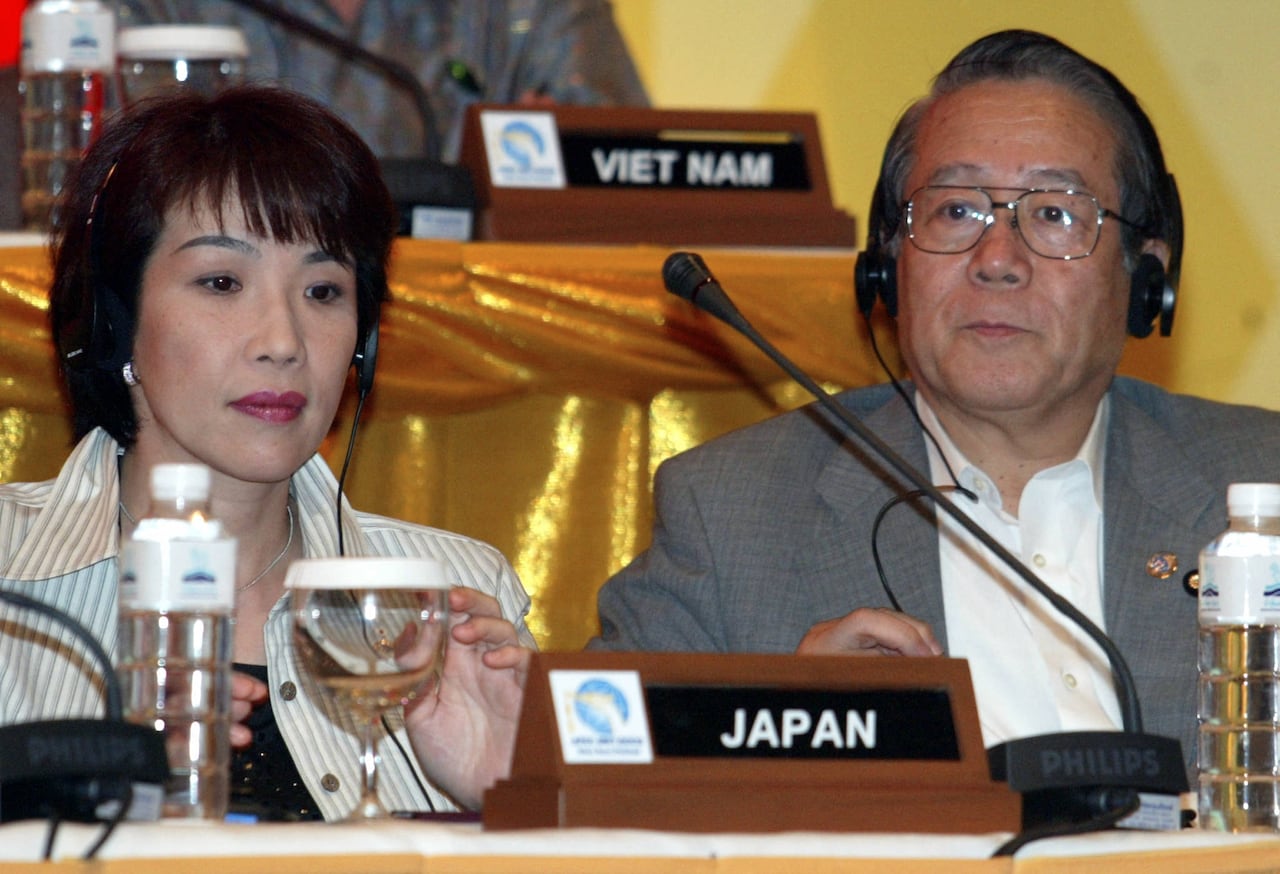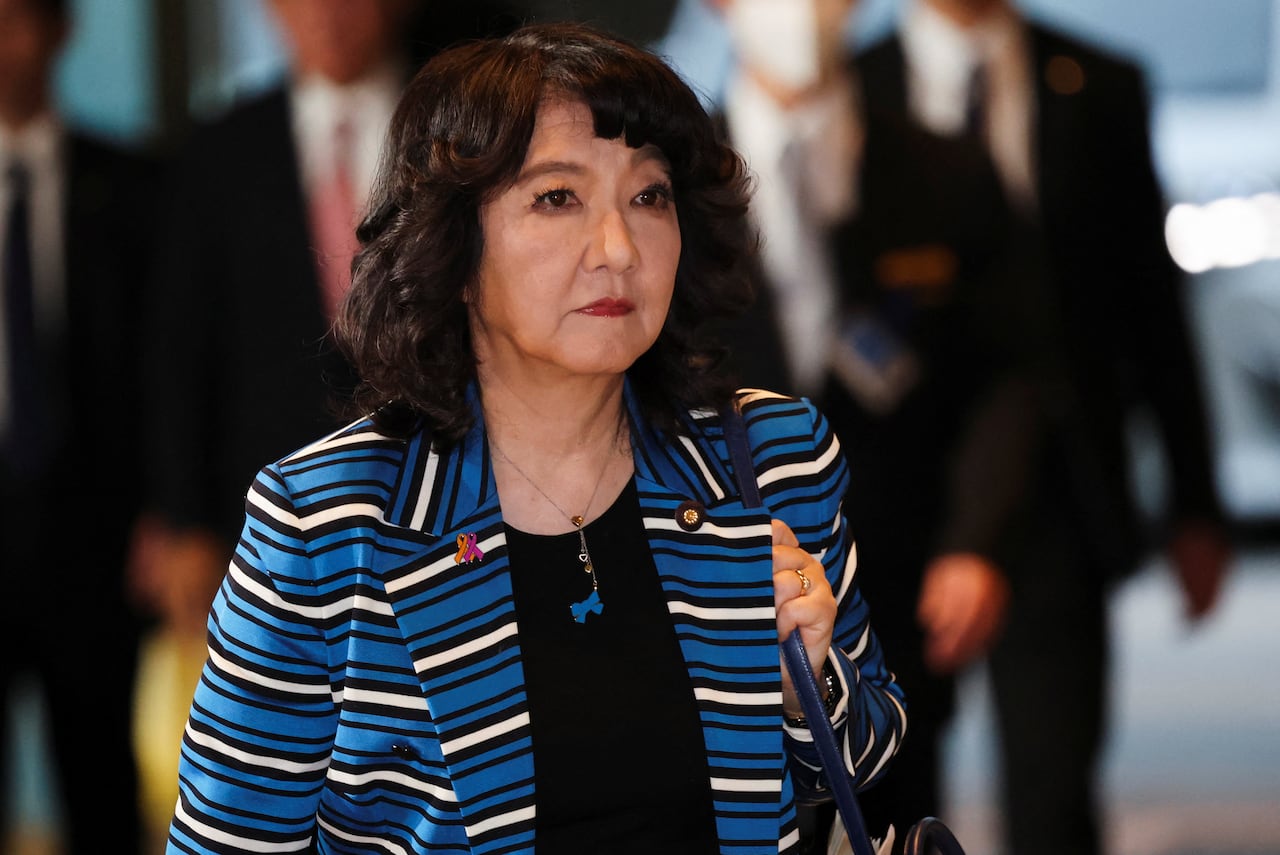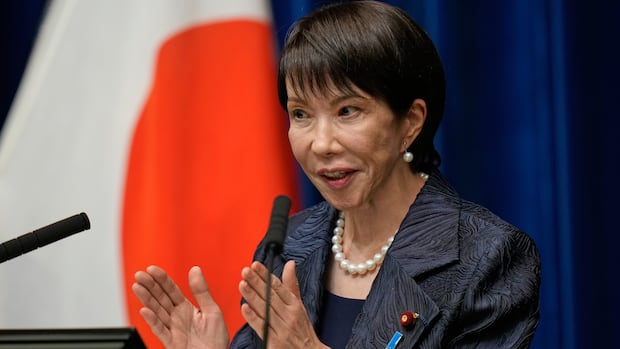Hardline conservative Sanae Takaichi was elected Japan’s first female prime minister on Tuesday, shattering the nation’s glass ceiling and setting it up for a forceful turn to the right.
An acolyte of former prime minister Shinzo Abe and an admirer of Britain’s Margaret Thatcher, Takaichi received 237 votes in the lower house election to choose the next premier, in the 465-seat chamber.
“As Japan’s first female PM, you’re making history,” European Commission President Ursula von der Leyen wrote on social media. “I look forward to working closely together to take the unique-EU Japan partnership to the next level.”
Prime Minister Mark Carney congratulated Takaichi in a statement, while also thanking outgoing prime minister Shigeru Ishiba for his leadership and service.
“Canada and Japan are building new partnerships in trade, critical mineral, energy, advanced manufacturing, artificial intelligence and defence. I look forward to working with Prime Minister Takaichi to elevate our co-operation across key sectors and create opportunities for workers and businesses in both our nations.”
 Japan’s Emperor Naruhito, left, stands as Takaichi bows, while former prime minister Shigeru Ishiba, second from left, looks on during a ceremony Tuesday at the Imperial Palace in Tokyo. (Kyodo/Reuters)
Japan’s Emperor Naruhito, left, stands as Takaichi bows, while former prime minister Shigeru Ishiba, second from left, looks on during a ceremony Tuesday at the Imperial Palace in Tokyo. (Kyodo/Reuters)
Takaichi’s victory as the 104th Japanese prime minister marks a pivotal moment for a country where men still hold overwhelming sway. But it is also likely to usher in a sharper move to the right on things like immigration and social issues.
Takaichi’s victory was secured after her Liberal Democratic Party (LDP), which has governed Japan for most of its postwar history, agreed to a coalition deal with the right-wing Japan Innovation Party, known as Ishin, on Monday. The coalition is two seats short of a majority in the lower house of the National Diet, Japan’s parliament.
Public anger over rising prices
After years of deflation, Japan is now grappling with rising prices — something that has sparked public anger and fuelled support for opposition groups including far-right upstarts.
Like Abe, Takaichi is expected to favour government spending to jumpstart the weakened economy. That has prompted a so-called “Takaichi trade” in the stock market, sending the Nikkei share average to record highs, the most recent on Tuesday. But it has also caused investor unease about the government’s ability to pay for additional spending in a country where the debt load far outweighs annual output.
Takaichi had enough votes to get the premiership, but to govern effectively, she will need the backing of more opposition lawmakers, said Tadashi Mori, a professor of politics at Aichi Gakuin University.
“The two parties do not command a majority in either chamber and to ensure a stable government and gain control of key parliamentary committees, they will need to secure more than half the seats,” he said.
 Takaichi is shown earlier in her political career, as a part of delegation to a trade conference in Thailand, on June 3, 2003. (Pornchai Kittiwongsakul/AFP/Getty Images)
Takaichi is shown earlier in her political career, as a part of delegation to a trade conference in Thailand, on June 3, 2003. (Pornchai Kittiwongsakul/AFP/Getty Images)
Any attempt to revive “Abenomics” could also run into trouble, Mori said, because it was devised to fight deflation.
“In today’s inflationary environment, further stimulus risks only weakening the yen,” Mori said.
Takaichi, 64, said defence and national security would be core pillars of any administration she led. She pledged to raise Japan’s defence spending, deepen co-operation with the United States and other security partners.
A frequent visitor to the Yasukuni war shrine in Tokyo that some Asian neighbours view as a symbol of wartime aggression, she has also called for a revision of Japan’s postwar pacifist constitution to recognize the existence of the nation’s military forces.
She opposes both same-sex marriage and allowing married couples to have separate surnames.
Takaichi’s mother was a police officer and her father worked at a car company. She graduated from Kobe University with a degree in business management and spent time in the late 1980s working in the U.S. as a congressional fellow to Democratic Rep. Pat Schroeder, of Colorado.
She broke into Japanese politics by winning a lower house seat in 1993 as an independent, before joining the LDP in 1996.
Takaichi led the first round of voting last year to succeed then-Prime Minister Fumio Kishida, but after the second round, Ishiba prevailed with 215 votes to her 194. Ishiba’s term as prime minister was brief and saw the LDP lose its majority in both houses.
Takaichi is married to the former LDP politician Taku Yamamoto, 73, who has paralysis on his right side after suffering a stroke earlier this year.
2 women named to cabinet
Takaichi on Tuesday named two women to her cabinet: Satsuki Katayama becomes the country’s first female finance minister, while Kimi Onoda becomes economic security minister.
Takaichi had pledged to increase the number of female cabinet ministers — an area where Japan has lagged its G7 peers.
 Japan’s newly appointed Finance Minister Satsuki Katayama arrives at the prime minister’s official residence in Tokyo on Tuesday. (Kim Kyung-Hoon/Reuters)
Japan’s newly appointed Finance Minister Satsuki Katayama arrives at the prime minister’s official residence in Tokyo on Tuesday. (Kim Kyung-Hoon/Reuters)
A former Finance Ministry bureaucrat well-versed in fiscal affairs, Katayama has a knack for currency diplomacy, and has befriended former and incumbent executives alike at the ministry overseeing exchange-rate policy.
Katayama, 66, is known for being outspoken and for her punchy decision-making, which contrasts with outgoing Finance Minister Katsunobu Kato, who rarely goes off script and keeps a low profile.
Shinjiro Koizumi is set to serve as Japan’s defence minister, while veteran lawmaker Toshimitsu Motegi will be foreign minister.


AloJapan.com